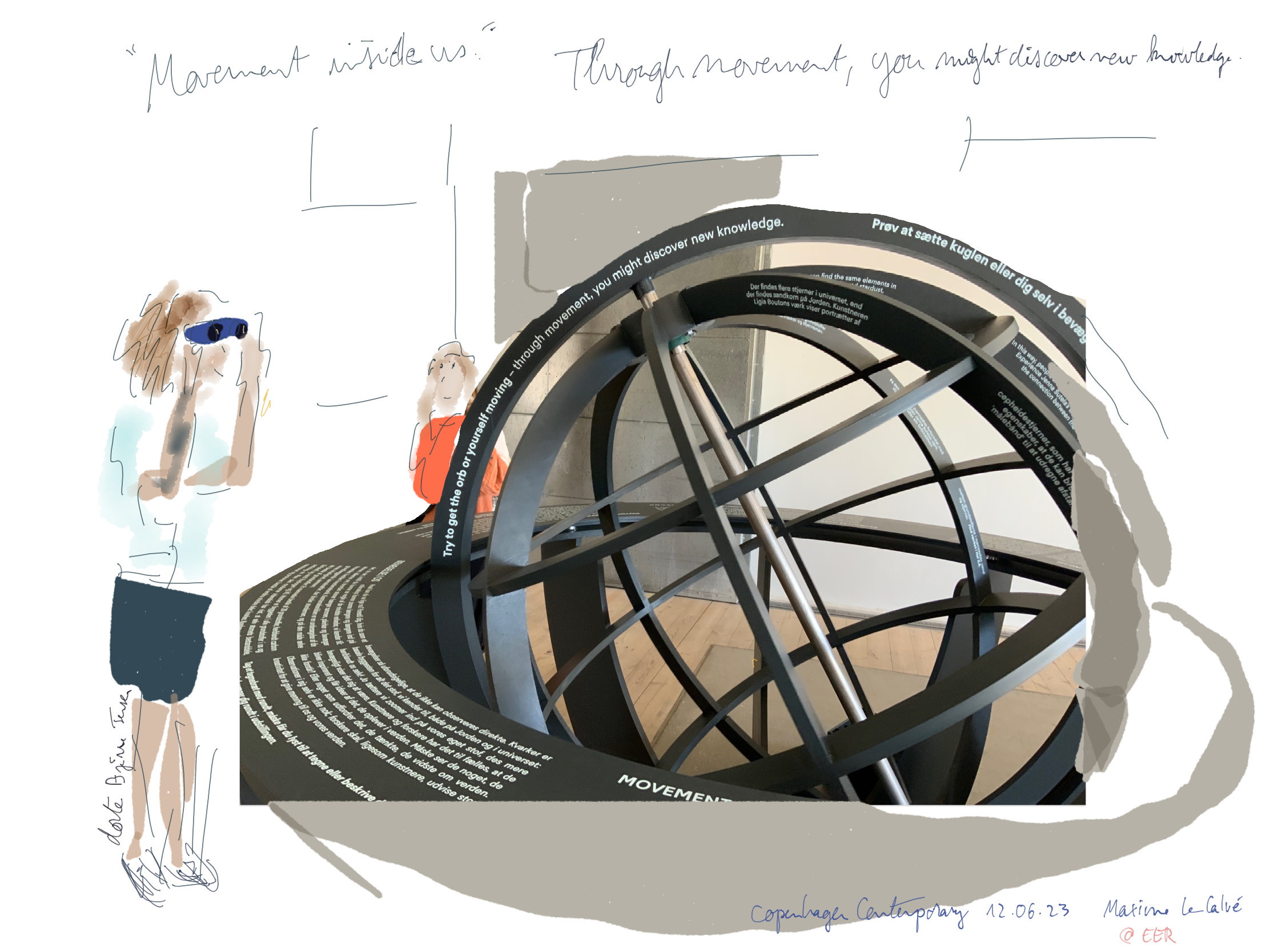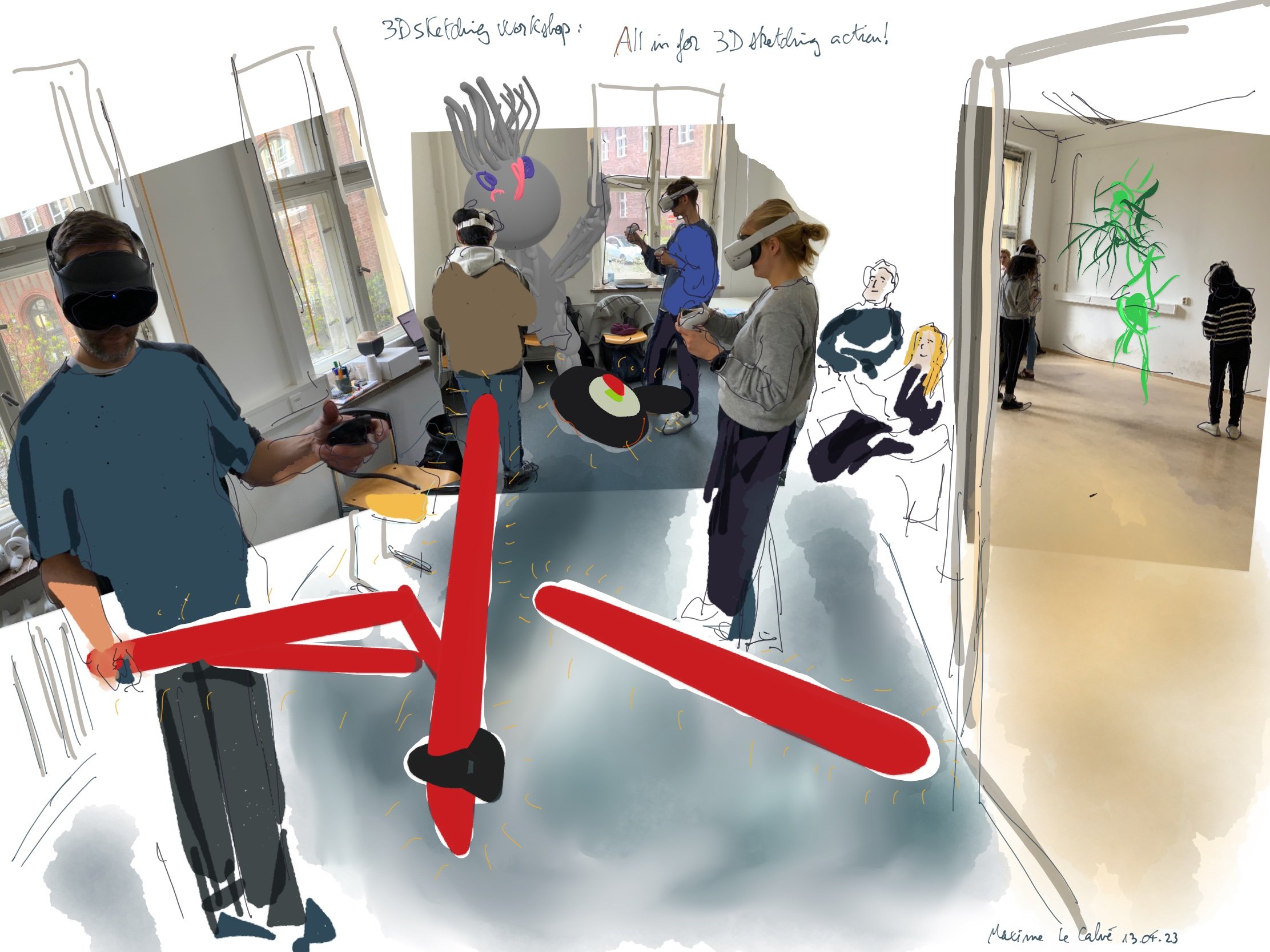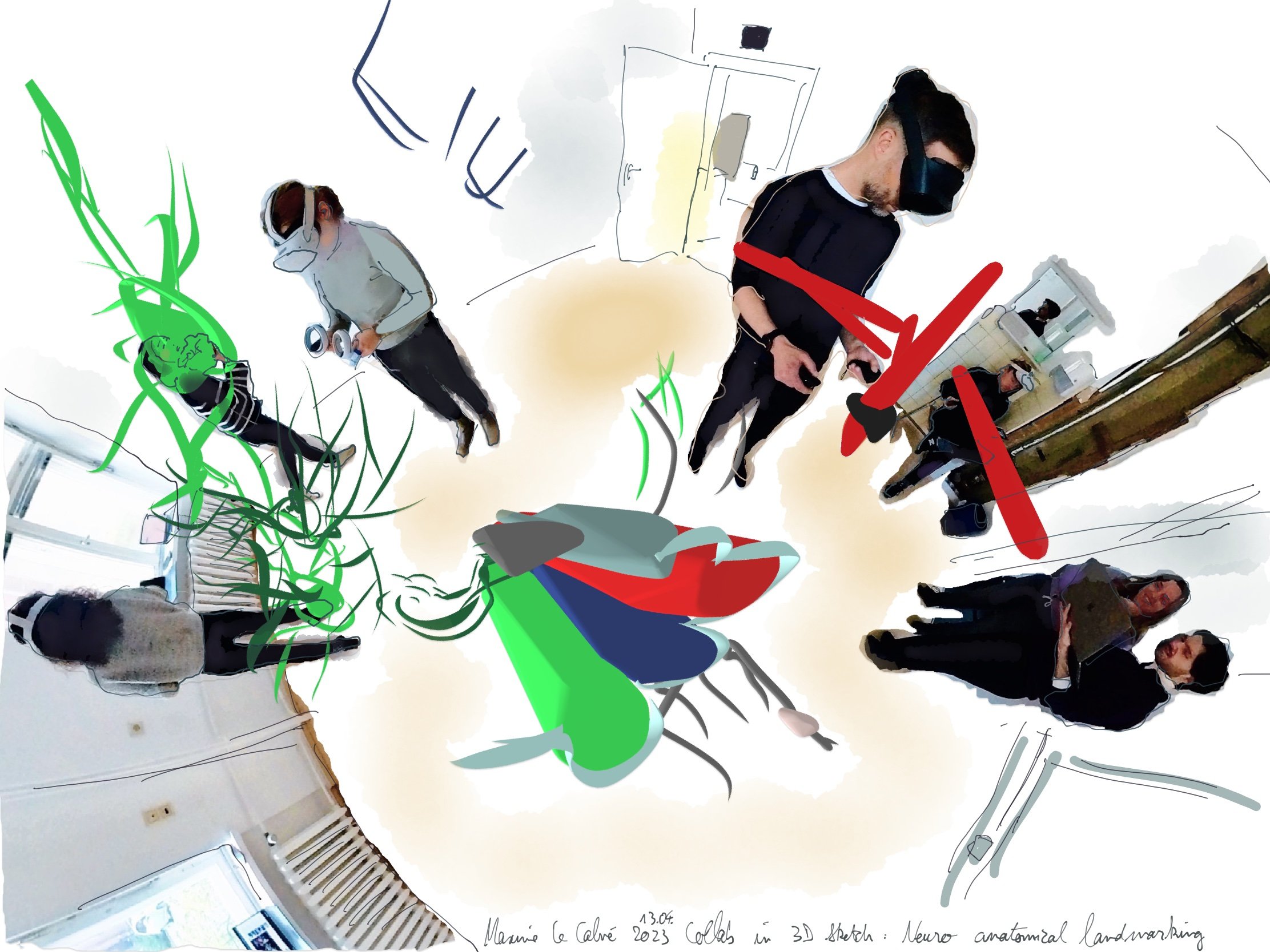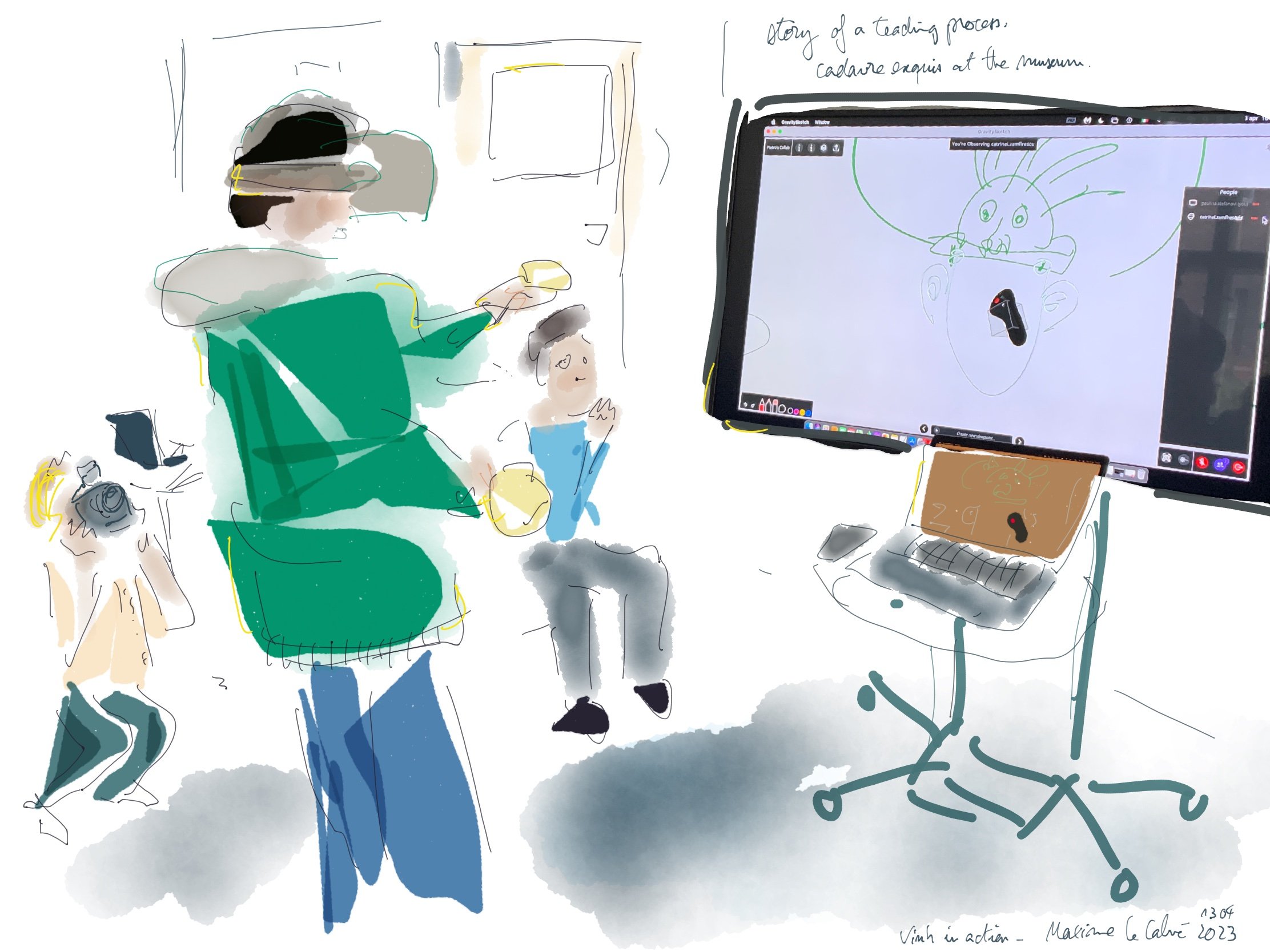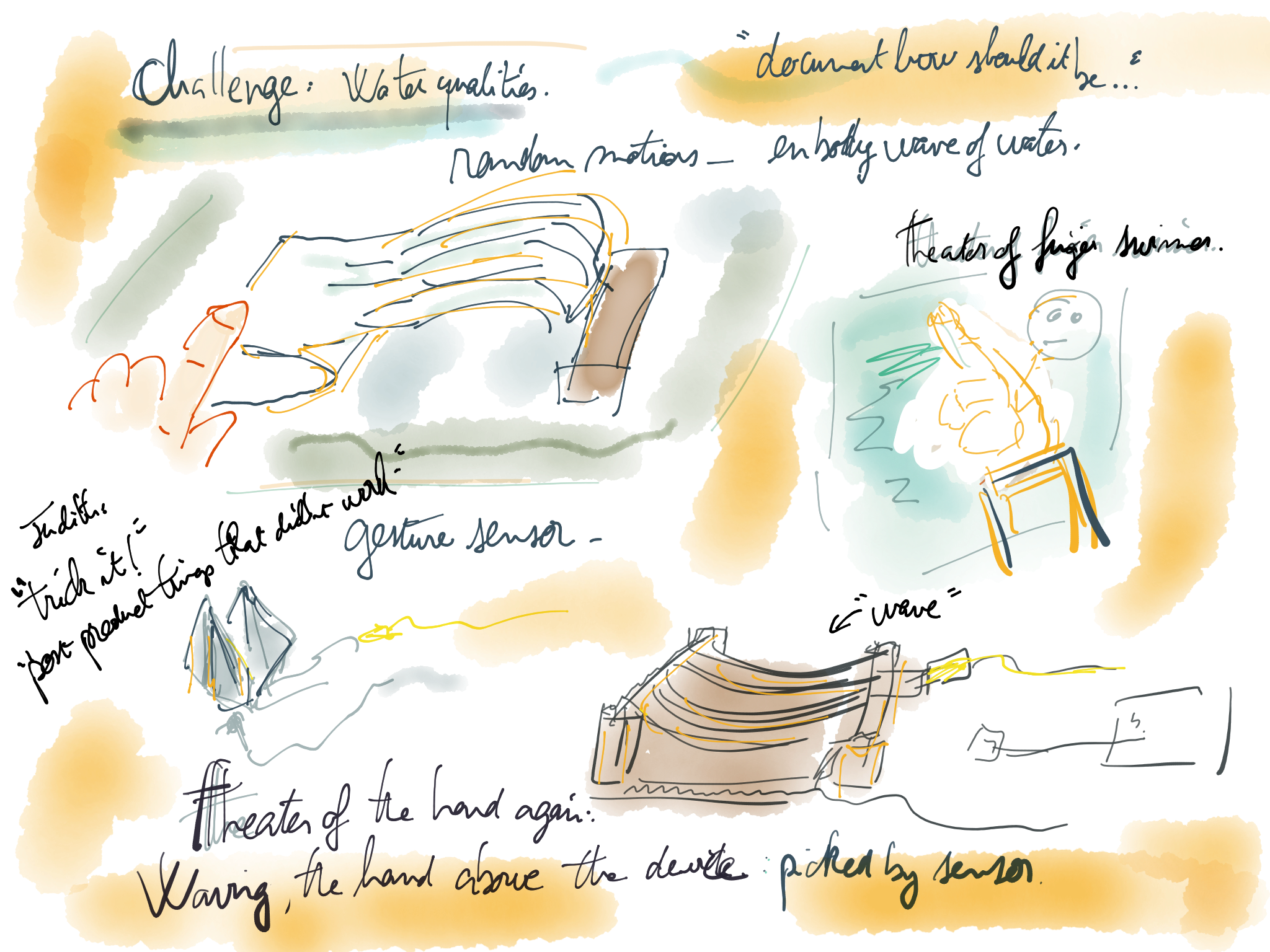Our first "More-than-human Sketching" series event was a great success! Not only were the workshops fully booked, but the SpecLab team also spent two days developing a new immersive performance for the museum's visitors using augmented reality glasses and spatial drawing software. The performance, "Drawing as Digestion: Spatial Knowing Processes," will be presented to the public soon (dates will be announced on the Berlin State Museums' website). Short lectures and activities by Elaine Bonavia, Paulina Greta Stefanovic, and myself provided an unusual framework for participants to engage with the embodied and transformative power of tracing lines and being traced by them.
The "More-than-human Sketching" series aims to repurpose an emerging digital design tool, 3D drawing, to relate to collection objects. This tool is currently used by the Speculative Realities Lab (Cluster of Excellence »Matters of Activity« / Department for Neurosurgery, Charité) to suggest new approaches to neuroanatomical teaching.
augmented coral at KGM ©MLC
Through these experimental performative scores, immersants (as we call the spectators of immersive performances) are invited to explore the “more-than-human” exhibition at KGM exhibition actively through collective engagements with spatial sketching (the exhibition is also featuring the fabulous work with artificial coral gardens of Cluster Member Rasa Weber.)
Don't miss the next workshop, "Knitting of Crafted Things: Digitizing Worlds in Textile Networks," which will take place at the Kunstgewerbemuseum Berlin on June 20-21. During this workshop, a second performance will be created, this time in collaboration with another SpecLab member, textile designer Nayeli Vega.










